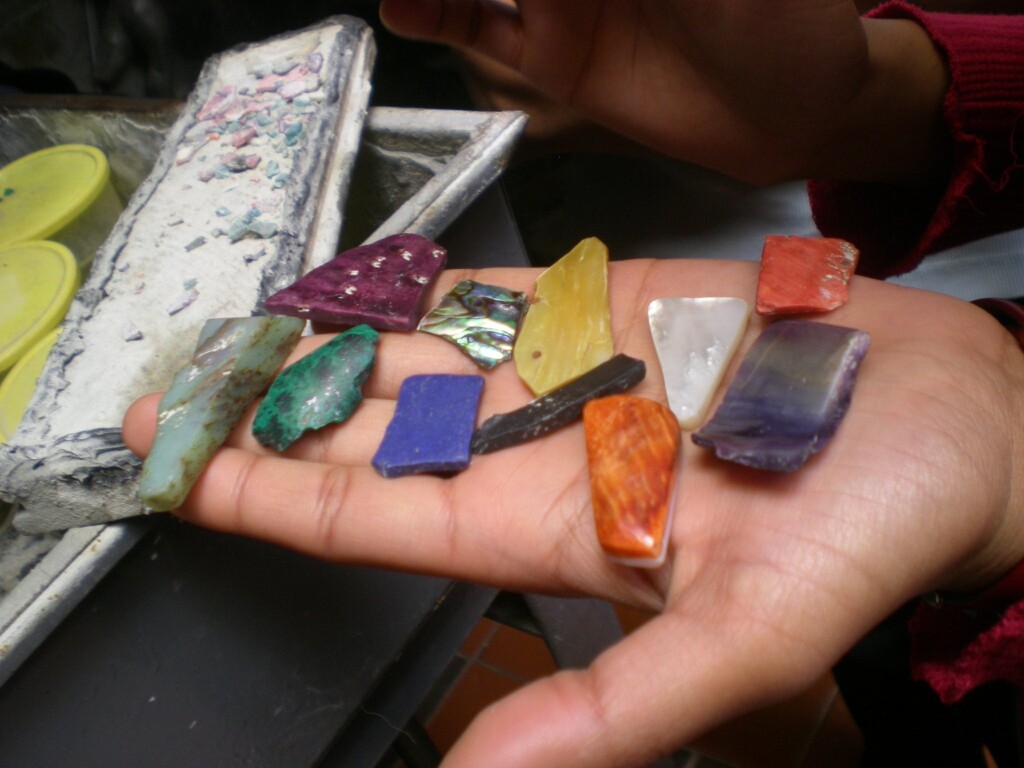Parashat T’tzaveh/ Shushan Purim
Exodus 27:20-30:10
The focus of this Torah portion is the investment and initiation ceremonies for the Tabernacle functionaries, the priests. Special costumes must be created for them, by master artisans who are “wise of heart, who have been filled with [the Divine] spirit of wisdom.” (Ex. 28:3) They are to take some of the gold and special fabrics and dyes and turn them into the specified articles of clothing that the priests must wear when they are serving in the sanctuary.
The order and division of the verses that deal with this project bear attention. First the special articles of clothing are listed: “And these are the clothes that they shall make…” (v. 4) The next verse (v. 5) tells us that the artisans “shall take the gold, …” etc., referring to the materials needed. And then there is an open space in the text, followed by the next verse, which begins the detailed instruction for making each article of clothing, and commands that the apron/ephod shall be made of these materials – listed again – with skillful work.” (v. 6)
What is the function of verse 5? The next verse adequately lists the very same materials, and instructs as to the manner of their use, so the previous verse seems redundant. Moreover, these two verses are separated from each other in our Torah scrolls by an empty space, leaving verse 5 – the verse listing the raw materials – as part of the previous paragraph, disconnected from the working instructions (that repeat the materials list) that begin with verse 6.
Perhaps our text means to help us enter into the very “hearts of wisdom” of these artists. We are meant to be taken slowly, step by step, into this marvelous commission that these artists have undertaken. Soon they will embark on their skillful work. But before that happens, it is as if the text helps us watch the artists take hold of their materials and touch them, feel them with their fingers or against their cheek, weigh them, rub them, smell them and just look at them – in their raw state – before commencing the work of transformation that will turn this stuff into priestly costume.
That is the purpose of the open space in the Torah scroll that separates the list of raw materials – in and of themselves – and the same list of materials as they are skillfully worked. For a moment the materials live on their own and the artists encounter them on their own. Time and stuff stand still, and we stand still with them.
We do not constantly engage in building a Tabernacle. But we do constantly engage in building our lives and our worlds. Where is that open, still space that helps us meet time and stuff before we begin to handle and manipulate them? That open space is the Sabbath.
Shabbat Shalom and Happy Shushan Purim
Rabbi David Greenstein
Subscribe to Rabbi Greenstein’s weekly d’var Torah
Photo by Shashi Bellamkonda licensed via CC 2.0
Thank you to John Lasiter for suggesting the title and selecting an image for this Torah Sparks – Rabbi Greenstein
- Toby Stein: In Memoriam - Thu, Feb 8, 2024
- Faithfulness and Hope: Parashat Sh’lach - Thu, Jun 23, 2022
- Past Their Prime: Parashat B’ha`a lot’kha - Thu, Jun 16, 2022

